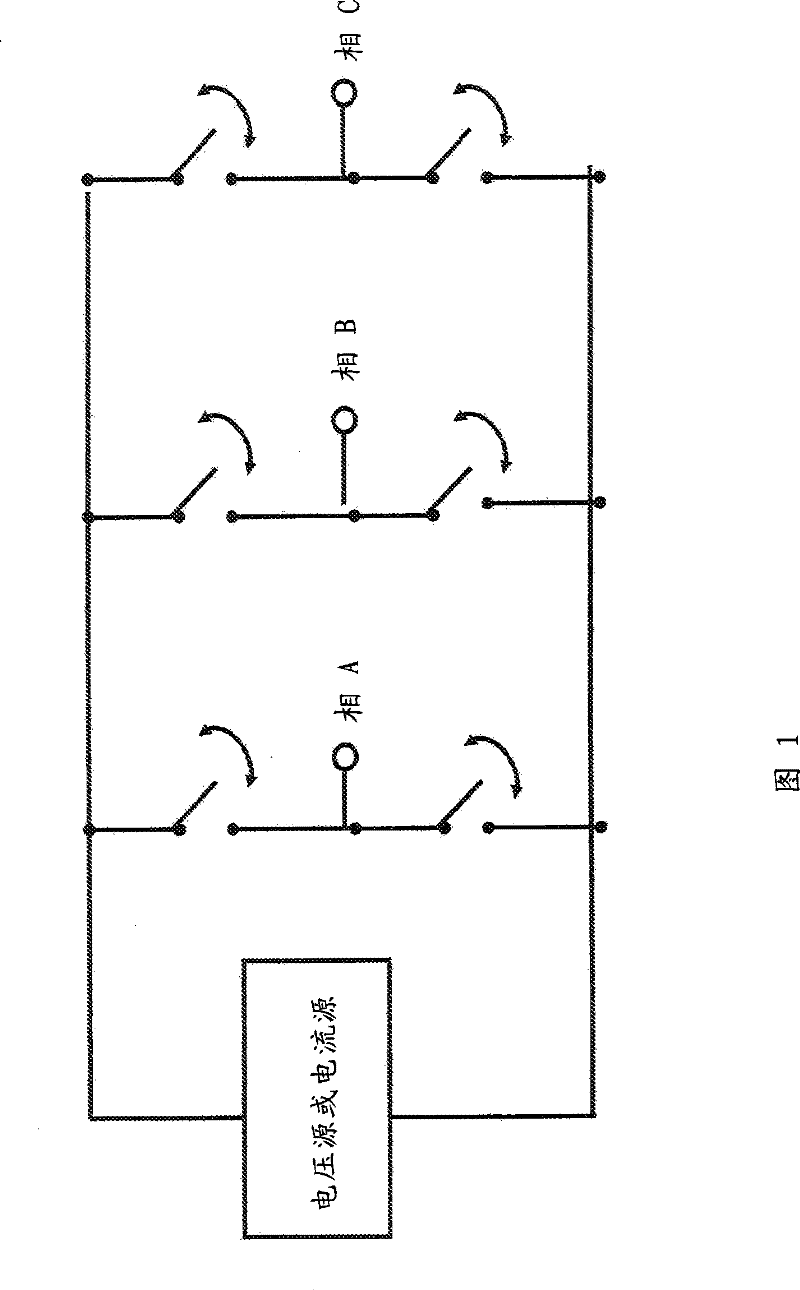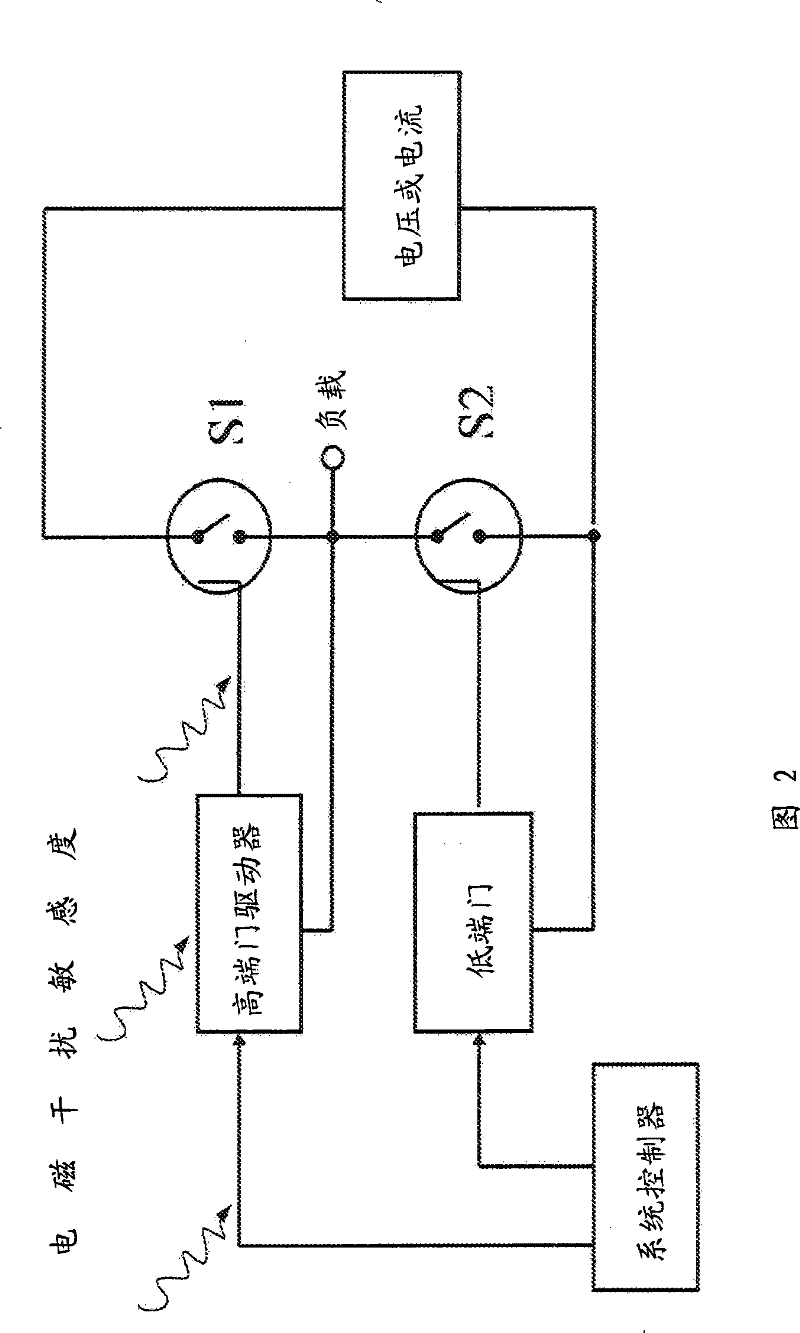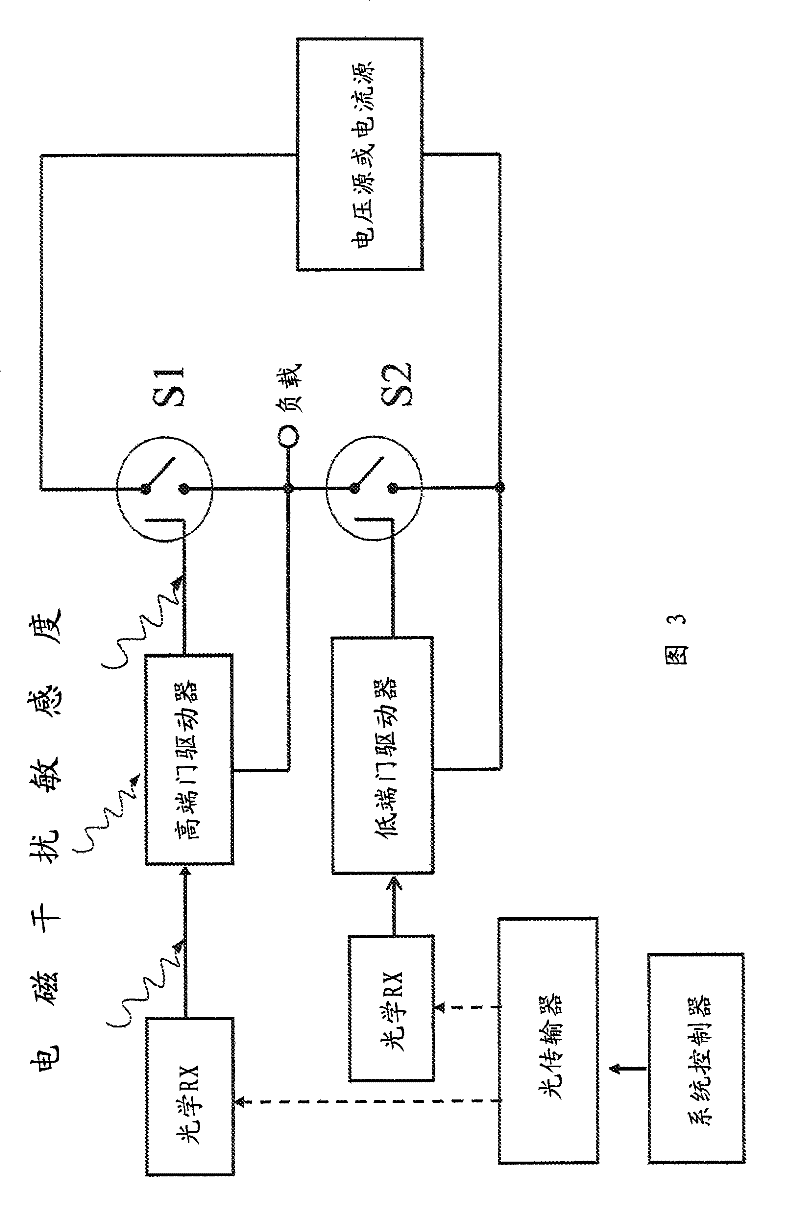Optically controlled silicon carbide and related wide-bandgap transistors and thyristors
A silicon carbide layer, field effect transistor technology, applied in electrical components, semiconductor devices, climate sustainability, etc., can solve problems such as half-bridge misoperation, low thermal conductivity, increased system complexity and cost, etc.
- Summary
- Abstract
- Description
- Claims
- Application Information
AI Technical Summary
Problems solved by technology
Method used
Image
Examples
Embodiment Construction
[0038] The present invention provides silicon carbide photoactive materials for use in the fabrication of a whole class of power devices and integrated circuits, with significant advantages in circuits requiring or benefiting from pure optical gate control. One implementation of this application is as Figure 7 Circuit 1 is shown. The circuit is a half-bridge power circuit comprising two transistor switches 2, one in the "high side" position and the other in the "low side" position. The controller 3 drives a source of electromagnetic radiation 4 capable of producing a beam of electromagnetic radiation 5 at a first wavelength and a beam 6 of electromagnetic radiation at a second wavelength, the first wavelength being smaller than the second wavelength. The high side switch and the low side switch may be illuminated with any of an arbitrary sequence of beams determined by the controller. Such half-bridge circuits are themselves used in various power supplies or as output stage...
PUM
 Login to View More
Login to View More Abstract
Description
Claims
Application Information
 Login to View More
Login to View More - R&D
- Intellectual Property
- Life Sciences
- Materials
- Tech Scout
- Unparalleled Data Quality
- Higher Quality Content
- 60% Fewer Hallucinations
Browse by: Latest US Patents, China's latest patents, Technical Efficacy Thesaurus, Application Domain, Technology Topic, Popular Technical Reports.
© 2025 PatSnap. All rights reserved.Legal|Privacy policy|Modern Slavery Act Transparency Statement|Sitemap|About US| Contact US: help@patsnap.com



